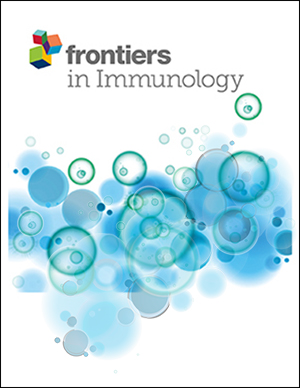 A review article published by the journal Frontiers in Immunology highlights recent research findings at the University of Arizona regarding the barriers to a cure for HIV that are posed by the B cell follicle.
A review article published by the journal Frontiers in Immunology highlights recent research findings at the University of Arizona regarding the barriers to a cure for HIV that are posed by the B cell follicle.
 It is co-written by Matthew P. Bronniman, PhD, a UA postdoctoral research associate, and Elizabeth Connick, MD, a professor of medicine, chief of the UA Division of Infectious Diseases and a renowned physician-scientist whose basic immunology studies and clinical trials into immune therapies have helped better understand HIV and how to prevent infection and AIDS.
It is co-written by Matthew P. Bronniman, PhD, a UA postdoctoral research associate, and Elizabeth Connick, MD, a professor of medicine, chief of the UA Division of Infectious Diseases and a renowned physician-scientist whose basic immunology studies and clinical trials into immune therapies have helped better understand HIV and how to prevent infection and AIDS.
The findings in the article, “The B-Cell Follicle in HIV Infection: Barrier to a Cure,” include data from Drs. Bronniman and Connick's lab.
 Another author on the article, Pamela J. Skinner, PhD, is a longtime collaborator of Dr. Connick’s who is on faculty at the University of Minnesota’s Institute for Molecular Virology and a member of the Host-Pathogen Interface Biology Cluster in the Department of Veterinary and Biomedical Sciences at the UM College of Veterinary Medicine.
Another author on the article, Pamela J. Skinner, PhD, is a longtime collaborator of Dr. Connick’s who is on faculty at the University of Minnesota’s Institute for Molecular Virology and a member of the Host-Pathogen Interface Biology Cluster in the Department of Veterinary and Biomedical Sciences at the UM College of Veterinary Medicine.
 Figure 1. A model showing the relative frequencies and localizations of various relevant T cell types discussed in this review. The relative susceptibility of CD4 subsets to HIV infection is indicated on each cell type (+ indicates somewhat susceptible, + + + indicates highly susceptible). EF CD4, extrafollicular CD4 T cells; TFH, T follicular helper cells; GC TFH, germinal center T follicular helper cells; TFR, T follicular regulatory cells; FDC, follicular dendritic cells, black stars represent extracellular HIV immune complexes.
Figure 1. A model showing the relative frequencies and localizations of various relevant T cell types discussed in this review. The relative susceptibility of CD4 subsets to HIV infection is indicated on each cell type (+ indicates somewhat susceptible, + + + indicates highly susceptible). EF CD4, extrafollicular CD4 T cells; TFH, T follicular helper cells; GC TFH, germinal center T follicular helper cells; TFR, T follicular regulatory cells; FDC, follicular dendritic cells, black stars represent extracellular HIV immune complexes.
ALSO SEE:
“UA Infectious Diseases Experts to Collaborate on National Effort to Develop HIV Cure” | Posted July 13, 2016
"New UA Chief of Infectious Diseases Has Long History of Novel Research into HIV, AIDS Prevention" | Posted Jan. 20, 2016

